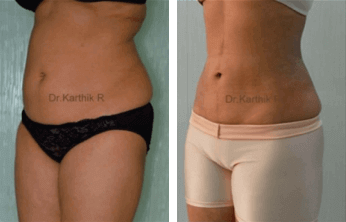Hair Today Gone Tomorrow

Let us confess it up front: most of us contemplate hair removal from various parts of our body from time to time for various reasons but the thought of pain and maintenance makes us chicken out. Most of the traditional methods like waxing, shaving, tweezing, plucking, threading are not only sheer torture to sit through, the results are agonizingly short lived too. Laser hair removal has come as the painless answer to all problems.
Pros and Cons
 When first described some 7 years ago, laser hair removal created controversy. As the technology matured, it became popular not only as a safe, non-invasive, pain-free procedure, but also because it is effective, rapid, easy and affordable. The statistics are in its favour too: a single treatment can reduce hair by 10–40%; three treatments by 30–70%; and repeated treatments by as much as 90%. These results persist for as long as 12 months. All these factors explain the quantum jump that laser and light-based hair removal technology has seen in the last decade.
When first described some 7 years ago, laser hair removal created controversy. As the technology matured, it became popular not only as a safe, non-invasive, pain-free procedure, but also because it is effective, rapid, easy and affordable. The statistics are in its favour too: a single treatment can reduce hair by 10–40%; three treatments by 30–70%; and repeated treatments by as much as 90%. These results persist for as long as 12 months. All these factors explain the quantum jump that laser and light-based hair removal technology has seen in the last decade.
Of course, like any other treatment laser hair removal is also not without its negatives. Most complications are generally temporary. Diffuse and perifollicular cutaneous erythema (reddening of the skin around the hair) and pigmentary changes are the most common adverse side effects.
Hair Biology
A hair follicle consists of three regions: the infundibulum (upper segment), isthmus (middle segment) and hair bulb (lower segment). On an average, the bulb is approximately 4 mm in depth from the surface of the skin requiring a deep penetration by the laser light-based systems. Human hair grows in a cyclic pattern. The cycle consists of a growth or anagen phase followed by intermediate degradation of a portion of the follicle, known as the catagen phase and then by a resting period when no growth occurs – the telogen phase.
The anagen duration varies greatly depending on age, season, gender, body site, hormones and underlying genetic susceptibilities. It is during the anagen phase that melanin production occurs and becomes part of the growing follicle. It is also in the anagen phase that damage can affect the structure theoretically responsible for hair generation. To achieve long-term hair removal, it is essential to destroy the structures that are responsible for hair growth: the bulge and bulb, which is what the treatment seeks to achieve through a photothermal reaction that destroys the hair follicle while sparing the skin.

Types of Laser
The laser source may be continuous mode or pulsed. The former emits a continuous stream of light as long as the medium is excited, resulting in heating and vaporization of the target tissue. Alternatively, a pulsed laser emits light only in short amounts, which may vary from nanoseconds to as long as seconds. Diode Lasers (800–1000 nm) for hair removal were cleared by the FDA. Because of the longer wavelength, the active cooling and the longer pulse widths, individuals with darker skin can be treated more safely with this system.
Although numerous lasers are available for laser assisted hair removal, their use in individuals with dark skin type presents many challenges due to competition from epidermal melanin. The ideal candidate for hair removal is a light-skinned individual with dark terminal hair. Dark skinned patients with high epidermal melanin content are prone to adverse side effects ranging from immediate pain and pigmentary disturbances to scarring. Consult a qualified expert before you go in for the procedure so that you can educate yourself on the positives and negatives of laser hair removal.












